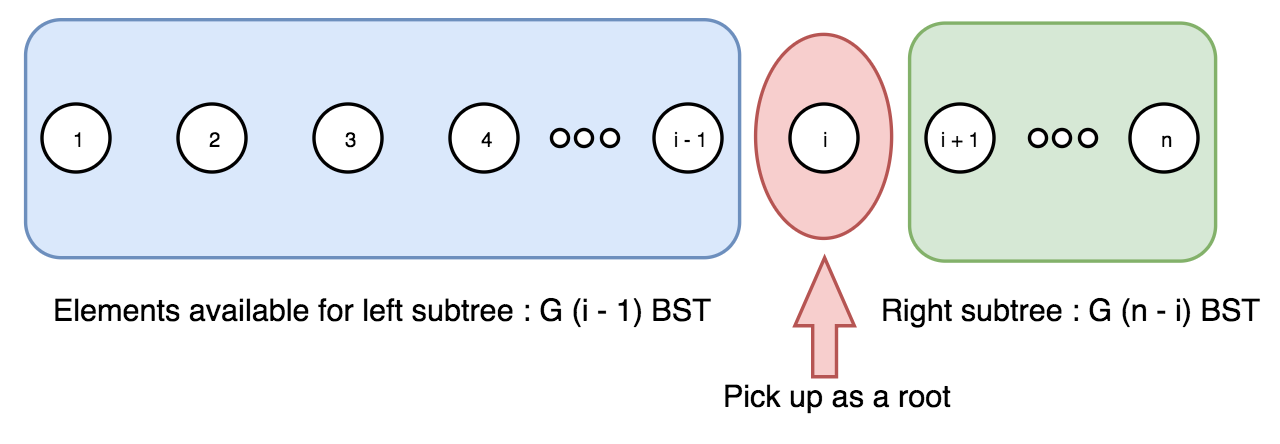算法:二叉搜索树
url:https://leetcode-cn.com/problems/unique-binary-search-trees-ii/
题目
1 | 给定一个整数 n,生成所有由 1 ... n 为节点所组成的二叉搜索树。 |
分析
首先来计数需要构建的二叉树数量。可能的二叉搜素数数量是一个 卡特兰数。
我们跟随上文的逻辑,只是这次是构建具体的树,而不是计数。
算法
我们从序列 1 ..n 中取出数字 i,作为当前树的树根。于是,剩余 i - 1 个元素可用于左子树,n - i 个元素用于右子树。
如 前文所述,这样会产生 G(i - 1) 种左子树 和 G(n - i) 种右子树,其中 G 是卡特兰数。

现在,我们对序列 1 … i - 1 重复上述过程,以构建所有的左子树;然后对 i + 1 … n 重复,以构建所有的右子树。
这样,我们就有了树根 i 和可能的左子树、右子树的列表。
最后一步,对两个列表循环,将左子树和右子树连接在根上。
Java解法
1 | public class TreeNode { |
Python解法